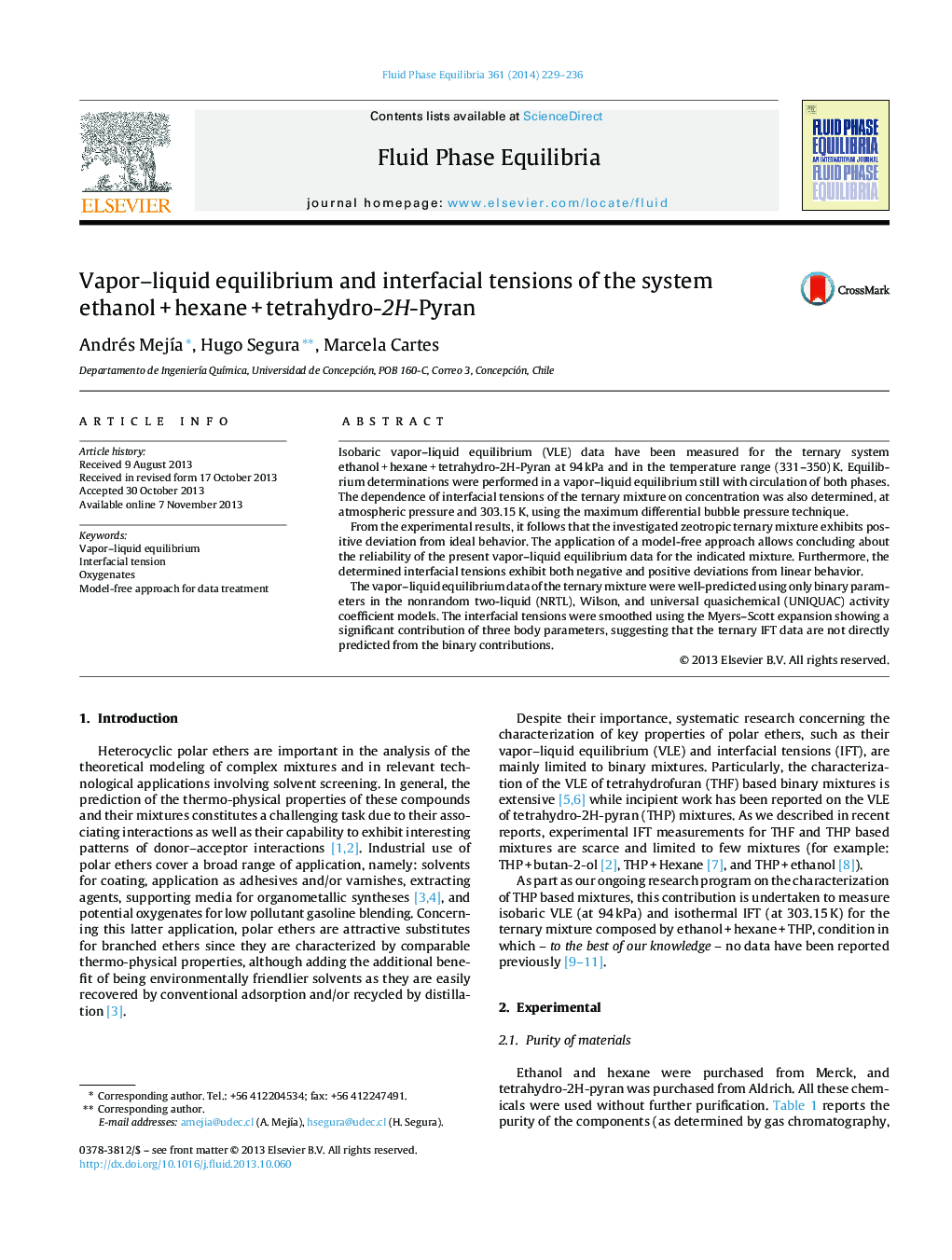| Article ID | Journal | Published Year | Pages | File Type |
|---|---|---|---|---|
| 201048 | Fluid Phase Equilibria | 2014 | 8 Pages |
•Phase equilibrium the ternary system ethanol + hexane + tetrahydro-2H-Pyran at 94 kPa.•Interfacial tension the ternary system ethanol + hexane + tetrahydro-2H-Pyran at 303.15 K.•The application of a model-free data treatment approach for ternary mixtures.•Experimental thermophysical properties for ethers.•Thermophysical properties for oxygenate fuels.
Isobaric vapor–liquid equilibrium (VLE) data have been measured for the ternary system ethanol + hexane + tetrahydro-2H-Pyran at 94 kPa and in the temperature range (331–350) K. Equilibrium determinations were performed in a vapor–liquid equilibrium still with circulation of both phases. The dependence of interfacial tensions of the ternary mixture on concentration was also determined, at atmospheric pressure and 303.15 K, using the maximum differential bubble pressure technique.From the experimental results, it follows that the investigated zeotropic ternary mixture exhibits positive deviation from ideal behavior. The application of a model-free approach allows concluding about the reliability of the present vapor–liquid equilibrium data for the indicated mixture. Furthermore, the determined interfacial tensions exhibit both negative and positive deviations from linear behavior.The vapor–liquid equilibrium data of the ternary mixture were well-predicted using only binary parameters in the nonrandom two-liquid (NRTL), Wilson, and universal quasichemical (UNIQUAC) activity coefficient models. The interfacial tensions were smoothed using the Myers–Scott expansion showing a significant contribution of three body parameters, suggesting that the ternary IFT data are not directly predicted from the binary contributions.
Graphical abstractFigure optionsDownload full-size imageDownload as PowerPoint slide
